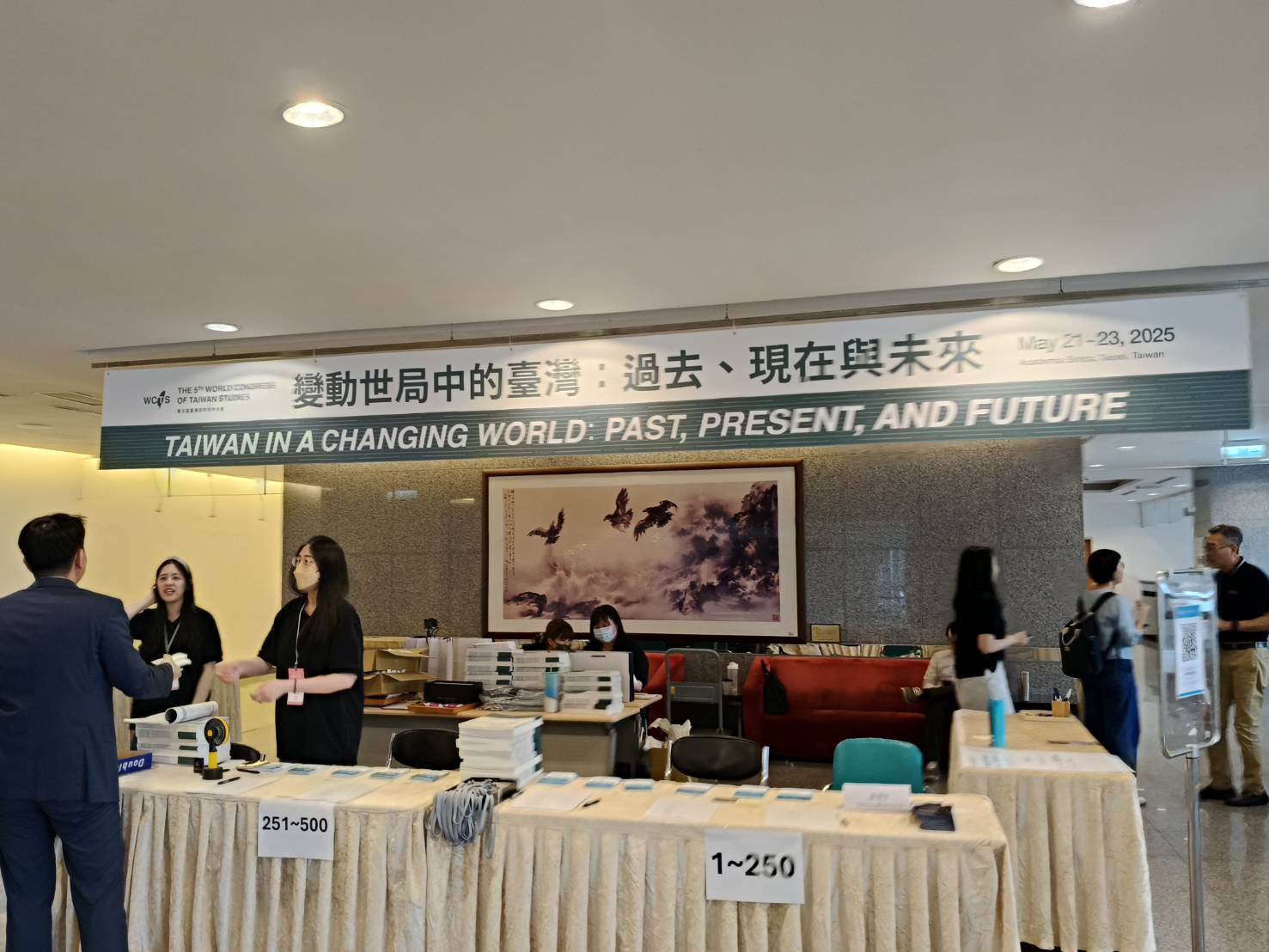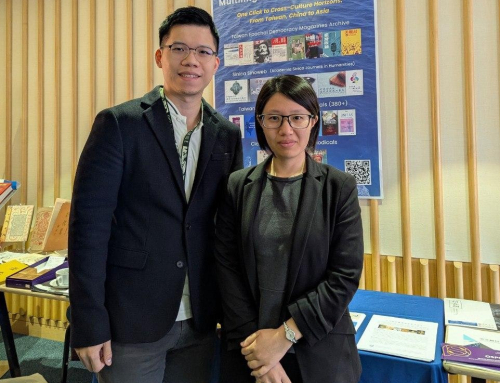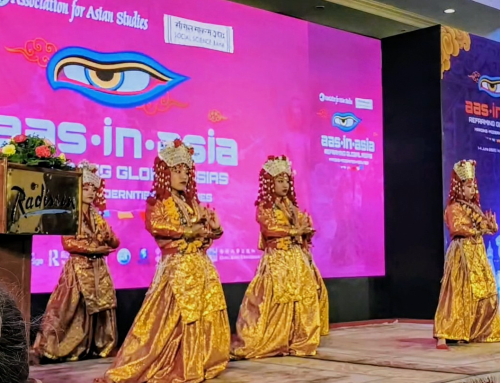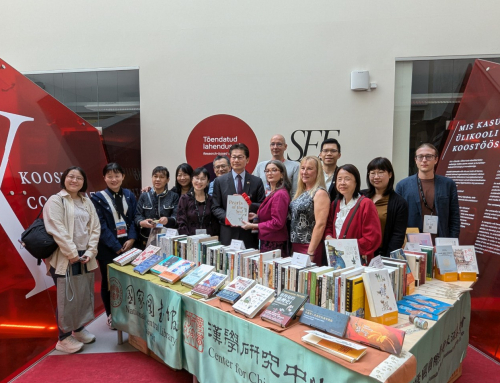The triennial World Congress of Taiwan Studies was held in grand form at Academia Sinica, Taipei, from May 21 to 23, 2025. United Digital Publications (UDP) was honored to be invited as an exhibitor and offered its congratulations with a floral tribute and a traditional eight-character couplet.
Island and the World: Multiple Connections
Amidst today’s rapidly shifting global landscape and Taiwan’s critical geopolitical position, scholars at the congress explored the theme “Taiwan in a Changing World: Past, Present, and Future” from multiple perspectives—including politics, economics, history, culture, the arts, and language—while reflecting on the island’s multifaceted connections with the wider world.
In addition to international academic exchange, the congress featured a series of forums addressing pressing local issues in Taiwan. These sessions brought together participants from diverse professional fields to examine contemporary Taiwanese society and future development from both scholarly and practical viewpoints. Key topics included environmental sustainability, cultural tourism, and population aging.
Migration, Colonial Modernity, and Democratization
At the opening ceremony, Academia Sinica Academicians Li Jen-kuei and Wu Yu-shan delivered two keynote addresses—“Linguistic Divergence among Taiwan’s Austronesian Languages and the Origins of the Austronesian Peoples” and “Taiwan: Advancing in a World of Geopolitics and Mercantilism”—establishing the research foundation of this congress: viewing the world through the lens of Taiwan.
Building on this framework, participating scholars engaged in in-depth discussions across multiple disciplines. In cultural studies, they examined how Taiwan’s multiethnic social fabric offers valuable cases for rethinking cultural adaptation in global migrant societies. In historical research, the layered experiences of Dutch, Qing, Japanese, and Republican rule provided critical ground for reinterpreting the impact of colonial modernity not only on Taiwan but also on broader developments in East Asia and the Pacific. Political scientists, meanwhile, analyzed Taiwan’s democratization process to refine prevailing theories on authoritarian transition and contribute a distinct “Taiwan model” to the study of the third wave of democratization.
A Semi-Enclosed Yet Dynamically Open Social System
Employing “Taiwan as Method” offers a globally resonant academic framework grounded in three key dimensions: the island’s unique geography, its layered history of four centuries of colonization and migration, and its strategic geopolitical location.
First, Taiwan’s insular nature creates a natural “cultural laboratory,” whose semi-enclosed yet dynamically open social system provides an ideal setting for observing language evolution, cultural hybridization, and social transformation.
Second, Taiwan’s complex historical trajectory—shaped by successive regimes and the interactions among Hoklo, Hakka, mainlander, and Indigenous communities—makes it a valuable case study for examining colonial modernity, ethnic politics, and cultural creolization.
Lastly, Taiwan’s position at the heart of the First Island Chain gives it strategic importance as a critical vantage point for analyzing changes in the political and economic order of East Asia and the broader world.
A Paradigm of Peripheral Insight: Deconstructing the Center–Periphery Binary
Through an interdisciplinary and comparative lens, the Taiwan experience transcends the limitations of conventional case studies, evolving into a theoretical paradigm of island globalization. This paradigm not only offers a fresh methodological perspective for understanding how small, open societies adapt and innovate within global systems, but also exemplifies the scholarly ethos of “deep local grounding with global relevance.”
As a pivotal site in East Asian regional studies, Taiwan’s unique historical depth and societal complexity make it an ideal vantage point for analyzing transformations in the contemporary world order. This paradigm, characterized by leveraging the small to illuminate the large, challenges the traditional center–periphery binary in Sinology and explores an innovative research path that combines micro-level empirical investigation with macro-level theoretical interpretation.
To help international scholars gain a deeper appreciation of Academia Sinica’s legacy and Taiwan’s rich cultural heritage, the congress organizers arranged site visits to the Hu Shih Memorial Hall, the Institute of History and Philology Exhibition Hall, the National Palace Museum, and the Taiwan Literature Base. Attendees were also treated to three musical performances of distinct styles and formats: a concert by the Academia Sinica Choir, Indigenous dance and music, and a harmonica chamber ensemble, offering guests an immersive experience of Taiwan’s diverse cultural and artistic landscape.
Digital Taiwan: A Cultural Asset of Global Value
Digitization is not merely a technical process—it is a means of preserving culture and memory. In recent years, United Digital Publications (UDP) has worked to systematically digitize precious manuscripts, rare books, and artworks housed in institutions such as Academia Sinica and the National Palace Museum. These efforts have resulted in structured digital databases, enhanced by cutting-edge AI technologies for text recognition, image analysis, and cross-media retrieval. By dissolving the boundaries between text and image, UDP has transformed extensive historical resources into interactive, searchable knowledge networks.
This initiative provides robust support for researchers and institutions, and elevates Taiwan’s cultural memory into a globally significant digital humanities asset—perfectly echoing the congress’s central theme of “linking the island with the world.”
(Written by: Lu Chang)






